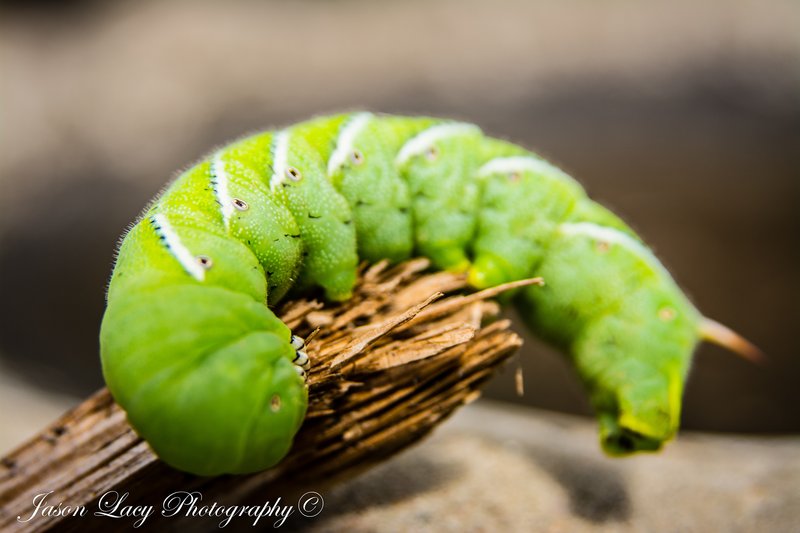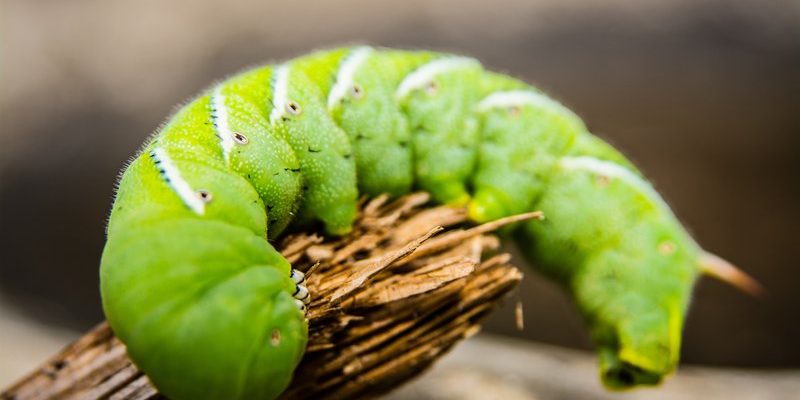
Imagine sitting down with a warm cup of coffee, discussing the intricacies of nature’s design. Just like how we humans have quirks in our behavior, hornworms have their own unique habits that make studying them an engaging educational experience. Using the right tools, like a simple remote camera or a notebook, you can capture their activities and behaviors in real-time. So, let’s dive into the world of hornworms and explore how to observe and document their fascinating behaviors!
Understanding Hornworms: What Are They?
Hornworms, primarily the larval stage of moths from the Sphingidae family, are often seen as pests by gardeners. These guys typically feast on tomato, pepper, and eggplant plants, making their presence known by the telltale signs of devoured leaves. But these little munchers play an essential role in the ecosystem, contributing to the life cycle of moths.
What’s intriguing is that hornworms can grow up to **4 inches long** and are often mistaken for twigs or leaves due to their excellent camouflage. This disguise helps protect them from predators. As you study these creatures, you’ll notice their fascinating **behavioral patterns**, such as how they feed during the day and blend in at night, which makes them an exciting subject for educational observation.
One of the more surprising aspects of hornworm behavior is their feeding frenzy! They can consume a whole leaf in a matter of hours. This rapid eating is essential for their growth, providing the energy needed to enter the next stage of their life cycle. By documenting their feeding habits, you can learn about their diet and how it directly affects their growth and transformation into adult moths.
Setting Up Your Documentation Process
To observe hornworm behavior effectively, you’ll need to set up a solid documentation process. Think of it as planning a little adventure into the life of these fascinating creatures. The first step is to gather your tools. A simple notebook and a camera can work wonders, but you could also consider using a remote camera for capturing footage without startling them.
When you’re ready to start, choose a location where hornworms are present—like a garden or a greenhouse. Once you find a hornworm, take note of its surroundings, including the plants it’s feeding on and any nearby predators. This context can enrich your understanding of their behavior.
Next, establish a **schedule for your observations**. Consistency is key! Observing the same hornworm at different times of the day can reveal changes in behavior based on light, temperature, and other environmental factors.
Documenting their feeding patterns is crucial; note what time they start and finish, how long they stay on one leaf, and if they move to another plant. Each observation will add depth to your study and reveal the fascinating ways these creatures interact with their environment.
Documenting Feeding Behavior
Feeding is one of the most interesting behaviors to watch and document. Hornworms are known for their voracious appetites, and observing them can be like watching a food documentary unfold! As they munch on leaves, they can often be seen moving in a rhythmic fashion, which is quite mesmerizing to watch.
Start by noting the time of day when your hornworms are most active. Do they feed more aggressively in the morning or late afternoon? You might find that environmental factors, like temperature and sunlight, influence their feeding habits. Also, keep track of how much they eat in one sitting.
You may want to draw or photograph the leaves before and after feeding sessions. This visual documentation can be helpful in illustrating just how much they consume. You can create a log of their favorite plants and the parts they prefer.
Making charts or tables to track this data allows you to visualize trends in their feeding behavior. It’s not just about gathering data; it’s about telling the story of these little creatures and their impact on their environment.
Behavioral Changes During the Day and Night
You might be wondering how hornworm behavior shifts from day to night. During the day, hornworms often feed openly. However, they can become quite shy once the sun sets. By transitioning to a **nocturnal routine**, they avoid predators that hunt in daylight.
Documenting these shifts is crucial. Start with a simple observation log, noting their activity levels throughout the day versus nighttime. You could be surprised to find that their eating habits change as they adjust to the time of day. At night, they might retreat to less visible areas or even stop feeding altogether, choosing to conserve energy instead.
It’s also fascinating to watch how they react to changes in light. If you use a remote camera with night vision, you might capture whole new behaviors that would be invisible to the naked eye during the day. This nighttime observation can enrich your understanding of hornworms and their survival strategies.
Documenting Changes in Color and Size
As hornworms grow, they undergo noticeable changes in size and color. They start off as tiny, pale green caterpillars and can become bright green or even blue as they mature. This transformation is not just cool to look at; it also speaks to their readiness for metamorphosis.
You can start a simple visual journal, taking photos of your hornworm at various stages of its life. Create a timeline to reflect its growth. Make notes about the size changes—how long it takes to move from one stage to the next. This documentation can show the spectacular growth rates of these creatures.
You might also notice them changing colors based on their diet. For instance, if they feed on tomato plants, their hue might shift slightly. Observing these changes can provide insight into their environmental interactions and how their diet influences their appearance.
Sharing Your Findings: Connecting with Others
Once you’ve gathered a wealth of observations about the hornworms, why not share your findings? You could create a blog or even a social media page dedicated to your studies. Sharing your experiences can encourage others to explore the wonders of nature, too.
Consider joining local gardening or entomology clubs to connect with fellow enthusiasts. They might be interested in your documented behaviors and may offer additional insights or suggestions to enhance your study. You could even collaborate on projects to compare notes on hornworm behavior found in different environments.
Creating presentations or reports based on your findings can also engage younger audiences. Whether you’re teaching a class or presenting at a local community event, sharing your knowledge about hornworm behavior can spark curiosity and inspire others to appreciate these often-overlooked creatures.
Documenting hornworm behavior is more than just an academic exercise; it allows you to connect with nature on a deeper level. As you observe and record their activities, you gain insights into the intricate tapestry of life that surrounds us. Hornworms serve as a reminder of the beauty and complexity within our ecosystems.
Through your observations, you not only learn about these caterpillars but also cultivate a greater appreciation for the delicate balance of nature. Whether you’re a budding scientist or simply someone who enjoys the outdoors, studying hornworms can be an enriching experience. So grab your notebook and camera, and let the adventure begin!

